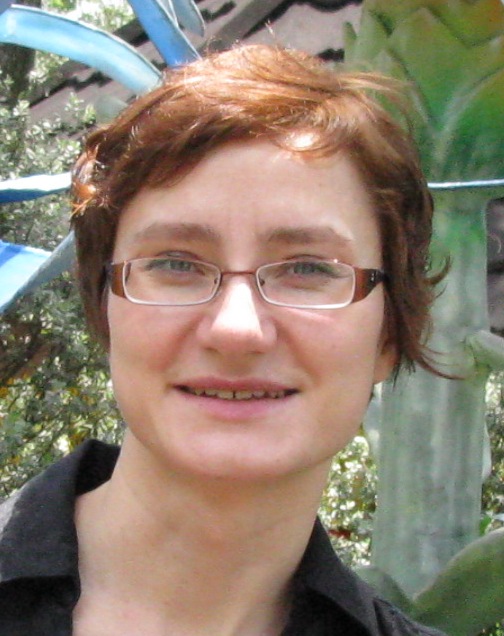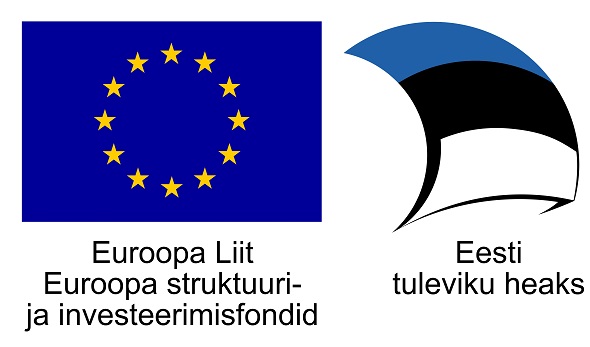Overview
Mapping creative industries in Estonia, Latvia and Lithuania
Silja Lassur, Külliki Tafel-Viia, Andres Viia
 |
 |
 |
Defining the creative industries in the Baltic countries
Discussions of the creative industries (CI) agenda in the Baltic countries date back to the beginning of 2000. The British Council has played a remarkable role in promoting the creative industries concept all over the world, and its contribution, through providing expertise and methodological assistance in mapping endeavours, cannot be underestimated in the Baltic countries either. Attention first started to be paid to the creative industries at the national level in all three Baltic countries when the British Council (BC) introduced the concept to different ministries in the Baltics in 2005. As a result, the Ministries of Culture in all three countries seized the opportunity to adopt the definition and content into their cultural policy agenda.
This period (of policy formation) saw the adaptation of the United Kingdom’s approach in terms of the ideas, structure and content of CI development. The first major steps at state level started with statistical mapping surveys of CI in Estonia, Latvia and Lithuania. The study processes included adapting the British definition of CI to the Baltic States – “The creative industries are those industries which have their origin in individual creativity, skill and talent, and which have the potential for wealth and job creation through the generation and exploitation of intellectual property” (DCMS, 1998). Estonia and Latvia have made some minor changes to this definition. In Estonia, a clause addressing ‘collective creativity’ was added – “Those industries that have their origin in individual and collective creativity, skill and talent and which have the potential for wealth and job creation through the generation and exploitation of intellectual property.” The Latvian Government in its political documentation pursues the following definition: [Creative industries involve] “activities, based on individual and collective creativity, skills and talents, which by way of generating and utilizing intellectual property, are able to increase welfare and create jobs. Creative industries generate, develop, produce, utilize, display, disseminate and preserve products of economic, cultural and/or recreational value.“
These studies at national level provided a good basis for the Ministry of Culture to apply for financing from the European Structural Funds. This rapid adaptation of the new concept by the public sector and especially the Ministry of Culture can be explained as an “opportunity to gain access to European finances, because it provided them with the possibility of additional funding. And their budgets have always been the most limited. They were simply trying to find additional means to support their sector.” (Lassur et al, 2010)
Estonia and Lithuania managed to include the financing of creative industries into the National strategy for EU Structural Funds for 2007–2013. In both countries the controlling rights and obligation to manage the resources went to the Ministries of Economic Affairs, since Structural Fund programs dealt with entrepreneurship and developments of the environment – topics that traditionally do not belong under the Ministries of Culture. Estonia primarily applied for support from the Structural Funds (Riiklik … 2007) to create infrastructures to support the development of CI, valuing creativity and raising awareness of entrepreneurship and creative industries (Lassur et al, 2010). In Lithuania, financing for the Lithuanian art incubator network was intended as part of the implementation of “the Action Programme for Economic Growth” (Creative …, 2010).
The statistical mapping of CI in Estonia, Latvia and Lithuania
The previously mentioned initial statistical surveys began in 2005, albeit slightly differently in each country. Estonia attempted to map all the sectors mentioned in the British definition. A study mapping the economic contribution of copyright-based industries was conducted in Latvia in 2005. Mapping the creative industries in Lithuania covered two counties – Utena and Alytus. The results of these studies were not comparable as the methodology was different in all three countries.
The definition and discussion of Creative Industries is fairly similar in the Baltics (as in other countries). Current discussion concerns what areas belong under CI and which policies should be implemented to develop it. Although all three countries base their definition of CI on the British definition, in later studies somewhat different sectors have been included when composing the research methodology (Table 1). Thus, for example, the mapping of the IT sector in Estonia has been relatively narrow, covering only entertainment IT. However, in Latvia and Lithuania, vastly broader scopes have been covered when it comes to the IT sector. Research by Lithuanians even includes the heritage sector, which has not been mapped in Estonia or Latvia. The latest Lithuanian research of mapping emanated from cultural and creative industries. This is a broader notion that includes CI and tourism, sport, museums, archives, heritage protection and other cultural activities. Yet, when accounting for CI contributions, fields related to sports were excluded (Lietuvos …, 2009)..
Table 1. Subsectors of creative industries covered by statistical research
|
Estonia (2009) |
Latvia (2008) |
Lithuania (2009) |
|
Arts (visual and applied arts) |
Visual arts |
Visual arts, applied arts and heritage |
|
Performing arts (theatre, dance, festivals) |
Performing arts (theatre, dance, festivals) |
Performing arts (theatre, dance, festivals) |
|
Music (interpreting, composing, producing, publishing, musical instruments, festivals, etc) |
Music (interpreting, composing, producing, publishing, musical instruments, festivals, etc) |
Music (interpreting, composing, producing, publishing, musical instruments, festivals, etc) |
|
Architecture |
Architecture |
Architecture |
|
Design (product design, fashion, graphic design) |
Design |
Designer fashion, Graphic design |
|
Film and video |
Film and video |
Film and video |
|
Broadcasting (radio and television) |
Television, radio and interactive media |
Television, radio and interactive media |
|
Entertainment IT (online and computer games, entertainment internet sites) |
Computer games and interactive software publishing |
Computer games and interactive software publishing |
|
Publishing (books, periodicals, newspapers, catalogues, etc) |
Publishing (books, periodicals, newspapers, etc) |
Publishing (books, magazines, newspapers, etc) |
|
Heritage (museums, libraries, archives, handicrafts) |
Cultural heritage |
Heritage (museums, libraries and archives) |
|
Advertising (advertising, media agencies) |
Advertising |
Advertising and public relations and communication activities |
|
|
Cultural educational activities |
Educational activities |
|
|
Recreation, entertainment and other cultural activities |
Botanical and zoological gardens |
|
|
|
Travel agencies and tour operators |
Source: Survey and Mapping of the Creative Industries in Estonia, 2009; Creative industries research. Actualization of statistics, 2008; Lithuanian Creative and Cultural industries, 2009
As these sectors in the three Baltic countries have been researched and mapped differently, then the real benefits, value added and other economic as well as statistical indicators are not directly comparable. All the research tried to assess both CI’s contribution to employment, and its economic role in producing value added and revenues (Table 2). Calculations about the share of GDP or share of employment that CI represents are made very carefully due to possible biases and uncertainties about the sub industries included.
Table 2. Economic and statistical indicators of CI
|
|
Estonia (2007 data) |
Latvia (2006 data) |
Lithuania (2006*, 2007 data) |
|
Number of people working in CI (% of all employed) |
28 000 (4.3%) |
63 511 (5.8%) |
61 297 (4.02%) |
|
Number of businesses in CI (% of all businesses) |
Over 5 000 (9.4%) |
9 327 (8.9%) |
6 149 (8%) |
|
Total income of CI |
EUR 1 146 000 000 |
EUR 1 014 000 000 |
EUR 1 256 000 000 |
|
CI as a share of GDP |
2.9% |
n/a |
5.2%* |
|
Concentration in the capital city |
47.1% of CI enterprises |
54.8% of CI enterprises |
70% of value created by CI |
Source: Survey and Mapping of the Creative Industries in Estonia, 2009; Creative industries research. Actualization of statistics, 2008; Lithuanian Creative and Cultural industries, 2009
Problems that occurred when mapping CI
Countries have used somewhat different databases and data collection methods. Estonian statistical research is based on Statistics Estonia’s entrepreneurship and cultural statistics data. In addition, data has been gathered from the Central Commercial Register, which also includes information about the self-employed and all micro businesses. Information about the self-employed with a yearly turnover of less than 250 000 EEK was obtained from the registry of the Estonian Tax and Customs Board. However, the problem with these databases is that industries are not defined precisely enough, and there may not be sufficient data. For example, statistics about Estonian music and visual and applied arts are nonexistent (Eesti …, 2009).
Latvian research mostly concentrates on data gathered by the bureau of statistics, and the data on CI was calculated according to a definition based on the NACE classification. The Latvian Statistical Office only collects data according to NACE 4-digit codes; therefore, many CI businesses are classified within the group “other activities” and are not included in the research (Mikelsone, 2008).
Lastly, CI research conducted in Lithuania also relies on data collected by the bureau of statistics and the NACE classification. Gathering information about design businesses is a more specific problem in Lithuania for example, as there are no enterprises in Lithuania that could be classified as “design enterprises”, and there is no statistical data according to which one could determine the share of such enterprises in CI. That is why the identification of the design sector is associated with the design functions embedded within traditional manufacturing, advertising, architecture and other CI sectors (Lietuvos …, 2009).
Similar problems with mapping and statistics can be identified for all countries:
– Only fragmentary data is currently available – the databases provide insufficient data and in some sub sectors there is no statistical data at the national level whatsoever;
– A wide range of types of business ownership exists in CI sectors – NGOs, limited companies, limited-liability companies, self-employed, government and local-government organizations, foundations – the databases with private, public and non-government sector data are not comparable with each other. They can also include contradictory data about sub sectors.
– National statistical registries (e.g. NACE) do not include many new professions or fields of operation, and this is also characteristic of CI in the current context of globalization and economic integration. According to NACE even the handicraft industry is not distinguishable.
Therefore, researchers in all three countries have claimed that it is important to improve the statistics for culture and creative industries. Additionally, it is essential to come up with specific data collection methods in order to obtain adequate data about these industries and compare them with other economic spheres in each country.
From statistical comparison to exchanges of experience
It is not enough to develop effective and sector specific political methods using data from statistical mapping alone. More sub sector specific and qualitative research is needed to map the needs of creative industries and the problems hindering their development. Region specific studies and analyses of cities and districts are also important. A range of qualitative studies has been conducted in all three countries. Due to the strong influence of region-specific characteristics, such research is mostly initiated at the city level. In each region or city (or district within larger cities), a specific CI structure has been built up to deal with sub sectors that dominate, how cooperation between different sectors works and what problems domestic enterprises experience. This has been examined for example by Lithuania in the Užupis district in Vilnius and in Klaipeda, and by Estonia and Latvia in their capitals and other regions. In addition, sector specific studies have been conducted in all three countries; for example, the state of design and its need for improvement have been mapped in all three countries.
Thus, in most cases statistical mapping is a good tool for bringing creative industries onto the political agenda, meaning that it is (economically) important in domestic and international comparisons. However, mapping alone is not enough to bring about the required supporting structures and methods for developing creative industries. As already mentioned, all three Baltic countries (including several individual cities and regions) have carried out several studies for the purpose of highlighting potential development claims as well as opportunities to support and develop CI in order to create a political framework for CI.
Comparing CI in the three Baltic countries, the purposes of its various sub sectors and its potential for support facilitates additional opportunities to interpret statistical indicators. At the same time it makes it possible for the Baltic States to learn from each other and exchange best practices (and why not worst ones too).





